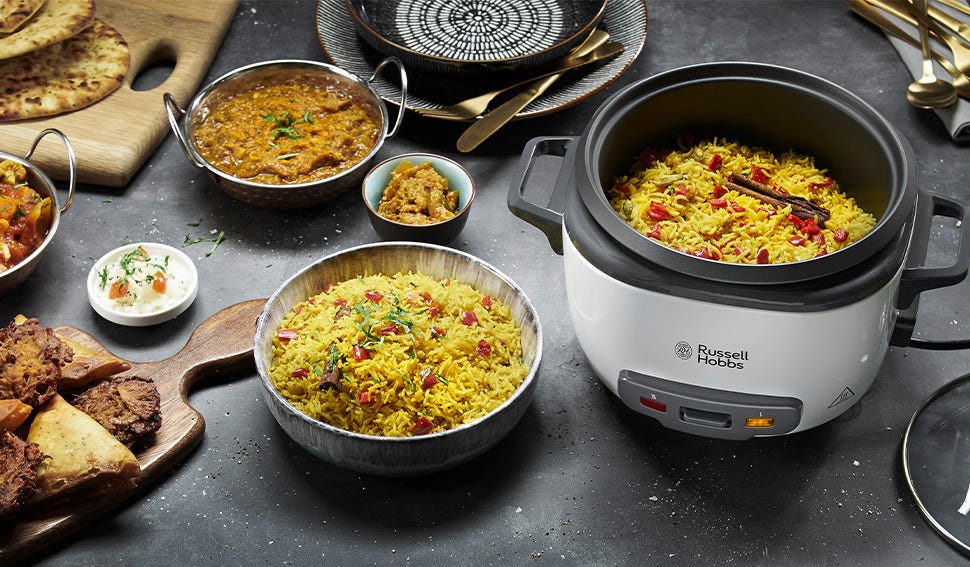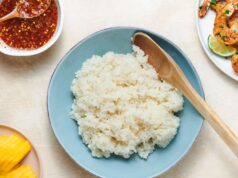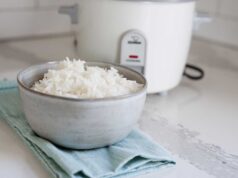If youve ever wondered how to cook Biko in a rice cooker, youre in for a treat! This Filipino classic dessert, made from sticky rice, coconut milk, and brown sugar, has always been a staple for festive gatherings and family celebrations. Traditionally cooked on a stovetop, Biko can also be easily prepared using a rice cookera kitchen tool that simplifies the process without compromising the dishs rich, caramelized flavors.
Biko, also known as Filipino sticky rice cake, is deeply rooted in Filipino culinary culture. It features chewy, sweet, and slightly nutty flavors combined with an irresistible topping called ‘latik’ (caramelized coconut cream). The best part? With modern kitchen appliances like the rice cooker, you dont have to be a seasoned chef to enjoy this dessert. Lets dive into this foolproof process that makes cooking Biko at home a breeze!

What Youll Learn in This Recipe
This comprehensive guide will walk you through everything you need to know about cooking Biko in a rice cooker. From understanding the key ingredients to mastering prep work and tips for avoiding common mistakes, this article has you covered. By the end, you’ll feel confident recreating this beloved Filipino delicacy with absolute ease.
Ingredients You’ll Need to Cook Biko
- Glutinous Rice: 2 cups (sticky rice is indispensable for Biko)
- Coconut Milk: 2 cups (fresh or canned)
- Brown Sugar: 1 cups (adds a deep caramel flavor)
- Salt: A pinch (balances the sweetness)
- Optional Garnish: Latik or toasted coconut flakes
To make this process seamless, make sure you have the following tools handy: a rice cooker, a cutting board, and a knife. These tools will ensure accurate measurements and prep work.
Step-by-Step Instructions for Making Biko in a Rice Cooker
Step 1: Prepare the Glutinous Rice
Start by rinsing 2 cups of glutinous rice under running water. This step cleanses the grains and removes extra starch, which can make your Biko too mushy. Once rinsed, transfer the rice into the bowl of your rice cooker and add 2 cups of coconut milk. Stir to combine evenly. Set your rice cooker to the ‘cook’ setting and let it do its job. The coconut milk will not only help cook the rice, but also infuse every grain with a rich, creamy flavor.
Step 2: Create the Sweet Syrup
While the rice cooks, its time to prepare the syrup. In a medium-sized saucepan, combine 1 cups of brown sugar and a pinch of salt with 1 cup of coconut milk. Stir the mixture over medium heat until the sugar dissolves completely. Continue stirring until the syrup thickens slightly into a caramel consistency. This syrup is what gives Biko its signature sweetness and amber color.
Step 3: Combine the Rice and Syrup
Once the sticky rice is fully cooked, transfer it into a large mixing bowl. Gradually pour the prepared syrup over the rice, folding it in gently to ensure every grain is coated evenly. This step is crucial for achieving Bikos delightful texture and flavor. Pro-tip: Use a silicone spatula to mix; it prevents sticking and makes clean-up easy!
Step 4: Cook the Mixture Again (Optional)
If you prefer your Biko to have a denser and more caramelized base, return the rice-syrup mixture to the rice cooker. Set it to ‘warm’ or ‘cook’ for another 10-15 minutes, allowing the sugar to caramelize further and deepen the flavors. Just be cautious not to burn the bottom layer.
Step 5: Add Garnishes
Now, its time to make your Biko presentation-worthy! Spread the rice mixture onto a greased tray, pressing it down gently to create an even layer. Top the sticky rice with latik (caramelized coconut cream) or toasted coconut flakes for an extra burst of flavor and texture. Let the Biko cool for at least 30 minutes before slicing and serving.
Tips for Perfecting Your Biko Recipe
– Make sure to use glutinous rice, not regular rice, for the authentic sticky texture.
– Stir the rice frequently during the syrup-mixing stage to avoid sticking.
– Use high-quality coconut milk for richer flavors.
– For easier cleanup, soak your cookware cleaner right after use.
– Maintain your tools, such as keeping your cutting board oiled, for longevity.
Why Try Biko in a Rice Cooker?
Cooking Biko in a rice cooker simplifies a traditionally complex process. Whether youre a seasoned kitchen enthusiast or someone new to Filipino recipes, this modern approach eliminates guesswork, allowing you to enjoy the dessert effortlessly. The consistent heat distribution in rice cookers ensures your sticky rice is cooked evenly, resulting in perfect Biko every single time!
More Delicious Recipes to Try
Love exploring new recipes like this one? Check out these related posts:
– Pork Chops with BBQ Sauce
– Best Sugar-Free BBQ Sauces
– Selling Homemade BBQ Sauce

External Inspiration for Your Next Cooking Adventure
If you’re looking to expand your rice cooker recipes, dont miss this inspiring Rainbow Fried Rice Cooker Recipe. You’ll unlock even more possibilities with your trusty rice cooker!
This article contains affiliate links. We may earn a commission at no extra cost to you.











